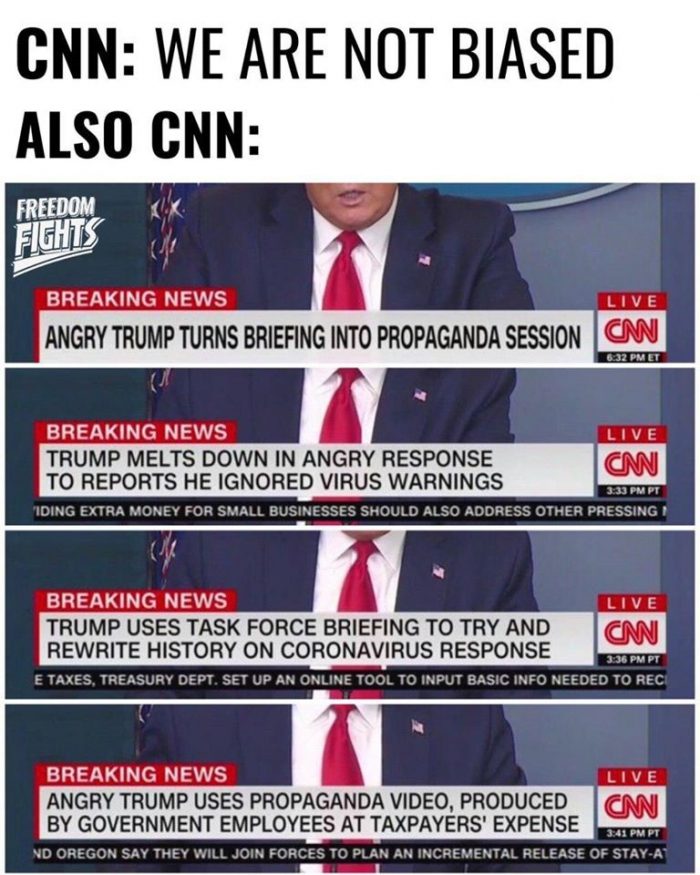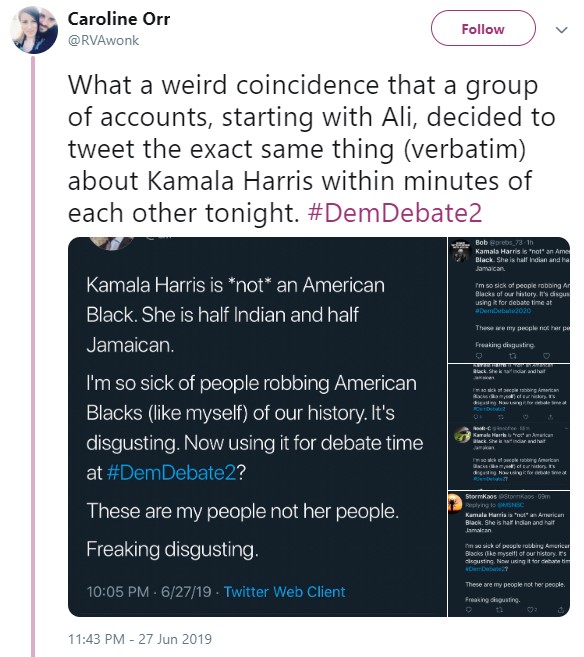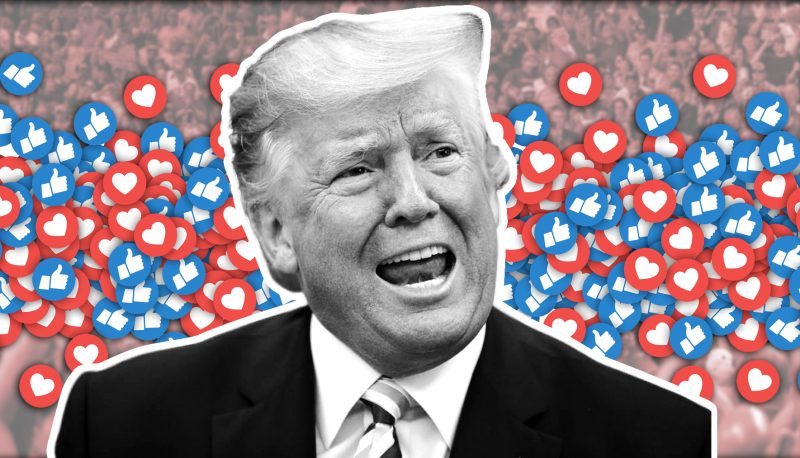Introduction
In the 2016 presidential campaign, a robust disinformation effort fueled by Russia’s intelligence agencies provided a new turn in the narrative of United States politics. Now, as the 2020 presidential election approaches in a nation and world grappling with a global pandemic, disinformation is a growing threat to American democracy, especially as necessary social distancing measures make street protest impossible. Whether claiming that George Soros controls the American left, spreading disinformation and conspiracy theories about the coronavirus pandemic, or using disinformation to suppress black voters, right-wing operatives, along with actors who simply hope to destabilize the U.S., are sowing false and misleading information designed to foment suspicion of society’s institutions and the experts who lead them.
Media amplification only makes that problem worse. Disinformers, foreign and domestic, rely on amplification from traditional media to help their messages spread, and their tactics have evolved for 2020. But by and large, news outlets have not adapted their own strategies to avoid getting duped, making it even more difficult for those of us consuming news to discern truth from fiction.
The good news is that disinformation researchers also know a lot more than we did in 2016. There’s a lot more information available. This report will outline who the disinformers are, what tactics they’re deploying, and how the media often inadvertently amplifies their work. We’ll also discuss how the pandemic has created new opportunities for disinformation to spread. Here’s what you need to know.
Who Are the Disinformers?
The term disinformation tends to conjure up images of Twitter bot armies with thick Russian accents, but the disinformation landscape in 2020 is a lot more complex. While Russia has great expertise in roiling U.S. political waters, it isn’t the only foreign actor in the disinformation and trolling games. The Oxford Internet Institute issued a report finding “evidence of organized social media manipulation campaigns which have taken place in 70 countries, up from 48 countries in 2018 and 28 countries in 2017.” Social media companies have removed content with disinformation campaigns originating in Saudi Arabia, China, and Iran.

But homegrown disinformation is a much bigger problem, starting with President Donald Trump’s reelection campaign and extending into a vast network of pro-Trump super PACs, right-wing media outlets, and an organized army of MAGA warriors happy to amplify every lie, false conspiracy, and misdirection online. Domestic disinformers have adopted tactics deployed by Russia and other hostile actors in 2016, optimizing them for 2020.
The lessons of 2016 haven’t been lost on the legions of far-right, pro-Trump conspiracy theorists who have their own web-based video and audio shows. With the coronavirus pandemic and its economic fallout posing threats to Trump’s reelection, the president’s online far-right boosters have taken up disinformation messaging designed to discredit the judgment of public health officials and scientists on the severity of the pandemic and the resulting COVID-19 disease. For instance, Rodney Howard-Browne, a Florida megachurch pastor who convened large church services in defiance of social distancing orders, claimed that the pandemic was “planned” at a 2019 New York event hosted by the Bill and Melinda Gates Foundation. And Rick Wiles, a religious-right broadcaster and font of anti-Semitic lies, suggested that the coronavirus emergency may have been “staged” to shut down the U.S. (Despite ample documentation of Wiles’ conspiracy-mongering and anti-Semitism, he is regularly granted press credentials by both the White House and the Trump campaign.)
In fact, MAGA-world influencer Brenden Dilley, whose YouTube channel has more than 12,000 subscribers, laid bare the MAGA disinformation playbook last year when he baldly asserted, “It doesn’t have to be true; it just has to go viral.” In that episode of his show, he used the example of the false claim that Sen. Elizabeth Warren, who was then running for the Democratic presidential nomination, had a racist knick-knack on display in her kitchen. On a more recent edition of his YouTube show, he reiterated that reasoning when explaining why he was advancing a false story about MSNBC host Joe Scarborough.
MAGA life coach Brenden Dilley praises Trump for baselessly suggesting that Joe Scarborough was involved in the death of an intern: “It doesn’t matter if it’s true. This is how you fight back against people who are trying to destroy you.” pic.twitter.com/eWFskLzFS5
— Right Wing Watch (@RightWingWatch) May 4, 2020
The Trump campaign and pro-MAGA super PACs have made it clear that the old rules of politics no longer apply, and their base now largely believes in an alternative reality. The president spreads and amplifies so much disinformation on his Twitter feed that it’s nearly impossible to keep up, and GOP elected officials for the most part now follow suit. Republican operatives have built disinformation tactics into their strategies.

Trump’s online supporters can’t merely be dismissed as bots. His online fanbase is overamplified but made up of actual individuals happy to spend considerable time and resources getting pro-MAGA messages out into the ether. Social media researcher Erin Gallagher has a fascinating piece on #TrumpTrains, self-organized cells of Trump fans working in Twitter direct messaging groups to spread Trump’s rhetoric and recruit new supporters to the cause. Gallagher was able to get a #TrumpTrain “conductor” to go on the record about how the #TrumpTrains are organized, recruiting volunteers or “riders” to tweet pro-Trump content in large volume at the direction of “conductors.”
Facebook groups and pages are another hub for pro-Trump disinformation. Writing for Media Matters, social media researcher Natalie Martinez details how the far-right propaganda machine operates on Facebook, “On Facebook, right-wing meme pages play a vital role in condensing and recycling far-right talking points and keeping the MAGA base engaged online. These pages regularly post extremist content, arguably violating Facebook’s hate speech content policy, and often exploit tragic events in the news cycle, images of veterans, and violent anti-immigrant rhetoric for likes and shares.” Multiple candidates running for office as Republicans have been caught participating—some as page administrators—in right-wing Facebook groups.

With a few narrow exceptions such as COVID-19, Facebook refuses to fact-check ads for disinformation and recently announced that it will allow political campaigns to pay influencers on Facebook and Instagram for sponsored content, but it will not require said influencers to disclose they are being paid by a political entity.
McCay Coppins, writing for The Atlantic, describes the potential power of the MAGA universe thusly: “The Trump campaign is planning to spend more than $1 billion, and it will be aided by a vast coalition of partisan media, outside political groups, and enterprising freelance operatives. These pro-Trump forces are poised to wage what could be the most extensive disinformation campaign in U.S. history. Whether or not it succeeds in reelecting the president, the wreckage it leaves behind could be irreparable.”

Russia’s own efforts have evolved since 2016 and 2017 when, according to an analysis by Recode, 2,752 Russian fake Twitter accounts were cited by U.S. media outlets in stories about politics. Ranging in credibility from the reporting of The Washington Post to the rantings of the alt-right hub Infowars, this amplification of Russia’s propaganda peaked on Dec. 1, 2016. On that single day, 164 citations of tweets from accounts linked to the Russian Federation appeared in U.S. news outlets.
And since then, the situation has only grown more complex. The Stanford Internet Observatory published a white paper warning of Russia’s use of “pseudo-think tanks and personas” to move narratives into the wider media ecosystem. According to the paper, “The GRU created think tanks and media outlets to serve as initial content drops, and fabricated personas — fake online identities — to serve as authors. A network of accounts additionally served as distributors, posting the content to platforms such as Twitter and Reddit. In this way, GRU-created content could make its way from a GRU media property to an ideologically aligned real independent media website [like One America News or Breitbart] to Facebook to Reddit—a process designed to reduce skepticism in the original unknown blog.” It’s a new layer to the ongoing social media manipulation targeting Americans that Russian actors never ceased.
Who Are Disinformers Targeting? (And Why?)
Media coverage of disinformation often focuses on who the culprits are (and if they’re using bots!) with little analysis of who disinformers are targeting and what the strategy is. But disinformers have always targeted their content with great care. Whether they’re shoring up Trump’s base, directing hate at minority groups, or encouraging voter suppression of key Democratic constituencies, disinformers continually target their craft to select audiences. They also dehumanize other groups as a way of stoking fear and hatred, energizing their own base.
Black voters are heavily targeted by disinformers both foreign and domestic. In 2016, both Russian trolls and the Trump campaign targeted black voters heavily with ads and organic content intended to suppress the vote. The Senate Intelligence Committee’s report on Russian interference found that black voters were targeted more than any other group by IRA trolls. And Trump’s campaign manager Brad Parscale bragged about running digital voter suppression ads targeting three groups, including African Americans.

Stop Online Violence Against Women recently released a comprehensive report on digital voter suppression targeting black voters. The report outlines past and present disinformation campaigns around such wedge issues as reparations, criminal justice, climate change, and immigration, which were meant to discourage black voters from voting for Democrats.
Pro-Trump trolls also impersonate black Americans on Twitter in an effort to sow discord in black online communities and create the impression that Trump’s support among African Americans is larger than it actually is.
In addition to black Americans, Jewish, Muslim, and Latinx communities are among the vulnerable groups disproportionately targeted online with “disinformation, harassment, and computational propaganda.” A report from the Institute of the Future examines the human cost of computational propaganda in the 2018 U.S. midterm elections.
Among the report’s findings:
- [Computational] propaganda took various forms, ranging from issue-specific false news or disinformation to racially and religiously specific defamatory content.
- Vulnerable demographics within already marginalized social groups—including young people, the elderly, military veterans, and those for whom English is a second language—were often particular targets of disinformation and harassment.
- In already embattled minority and social groups, both human groups and bot armies spread harassing content and misleading information about voting and worked to foment in-group fighting both online and off-line.
The report also notes that disinformation campaigns tapped into “age-old stereotypes and conspiracies—often in attempts to pit marginalized groups against one another.”
Muslim American candidates running for office were also targeted specifically with disinformation and propaganda during their campaigns. Research from the Information Disorder Lab at Harvard’s Shorenstein Center found that Muslim candidates were falsely tied to extremist groups, falsely accused of following Sharia law, targeted with coordinated disinformation operations, and had their non-Muslim campaign surrogates targeted for harassment and abuse as well. Soon after they were elected, Reps. Ilhan Omar and Rashida Tlaib—the first Muslim women to serve in Congress—were the targets of a massive disinformation operation on Facebook. An Israeli-based group infiltrated right-wing Facebook pages and groups to spread Islamophobic content that targeted Omar and Tlaib in particular.

Finally, yes, MAGA warriors target their own base with disinformation and conspiracy theories to the point where Trump’s base now wholly believes in an alternative political and news consumption reality, and many of the supporters targeted become amplifiers of the disinformation and conspiracies on their own social media feeds. In her report on right-wing propaganda on Facebook, Martinez identifies six themes that drive pro-Trump Facebook: anti-immigrant, guns and mass shootings, pro-Trump, race-baiting, voter suppression, veteran engagement bait, and nonpartisan clickbait. These memes play a vital role in keeping the base engaged, echoing disinformation and conspiracies from right-wing media and the president himself.
Types of Disinformation to Look Out for
The pro-Trump coalition is large and loud, but the playbooks by which its members play are fairly consistent. Once you know what to look for, pro-Trump disinformation, conspiracies, and propaganda are much easier to spot online and in the news. The following are some broad common themes that pro-Trump disinformers engage in repeatedly.
Voter Suppression: 2020 will be a turnout election, and Trump’s base won’t be enough to help him cross the finish line. In addition to turning out Republican voters, the pro-Trump coalition will spread and amplify disinformation intended to suppress the vote of key Democratic constituencies. In 2016, the Trump campaign was open about running voter suppression ads as part of their strategy, and disinformation about when and where to vote ran rampant in the days leading up to the 2016 election. A Brennan Center report on digital voter suppression and the 2018 midterm elections found three types of voter suppression campaigns running on Twitter and Facebook: “deception (lying about the time, place, and manner of voting); calls for boycott; and voter intimidation or threats.”
Facebook and Twitter now ban disinformation and ads intended to suppress the vote on their platforms, but disinformers are already adapting to the rules. Expect to see fewer outright lies about when and where to vote, and more content intended to intimidate voters and spread voter apathy.
Claims of Rigging and Voter Fraud: Trump never misses an opportunity to claim that the elections are rigged. Whether it’s claiming that the DNC is rigging the primary against Bernie Sanders (a position the Sanders campaign denies), that nonexistent voter fraud cost him the popular vote, or that out-of-state voters cost him New Hampshire in 2016, Trump uses his presidential megaphone to amplify conspiracy theories designed to plant the notion that that the system is rigged. This tactic precedes Trump’s presidency. In 2016, candidate Trump claimed multiple times in the weeks before Election Day that the election was rigged.
Trump’s MAGA coalition has adopted this narrative wholesale, and if Trump loses the 2020 election, expect Trump and his base to claim that the election was invalid due to massive voter fraud and rigging.
Conspiracy Mongering: Conspiracy theories have long been a fixture of extremists and right-wing media but have become mainstream in the era of Trump, himself a conspiracy theorist. Extremist actors have continually used conspiracy theories as a way to galvanize Trump supporters online.

Online conspiracy-theory communities can also serve as recruitment hubs for trolls. Research suggests that people with extremist political views (left or right) are also likely to believe in conspiracy theories. The QAnon conspiracy theory, currently popular among Trump supporters, is the most prominent current example of this. While Trump has never openly supported QAnon, he frequently retweets accounts known to amplify the conspiracy theory.
Most recently, the coronavirus pandemic has provided fertile ground for the growth of conspiracy theories designed to either shore up the narrative advanced by the Trump administration (that they did a great job, and anything bad that happened is somebody else’s fault) or undermine public health authorities—especially those whose advice is at odds with whatever the president says or does.
Race-Baiting: Race-baiting has always been a central tenet of Trump’s electoral strategy, but in the final weeks before the 2018 midterm elections, Trump’s use of this strategy reached new heights. As Vox put it in an explainer on Trump’s closing argument for the midterms, “There’s no subtlety in President Donald Trump’s closing message to voters: Be very scared of brown people in this country.”
The pro-Trump coalition’s race-baiting is so vast it’s nearly impossible to categorize but includes alarmist rhetoric about a border crisis that doesn’t exist, claims that “both sides” were violent at the 2017 Unite the Right melee in Charlottesville, Virginia, and disinformation about migrant caravans. This is in addition to the conspiracies and claims of voter fraud discussed in the last section.
Reproductive Health Disinformation: Reproductive freedom will be a wedge issue in 2020, and the pro-Trump coalition’s playbook for amplifying disinformation about abortion is well worn. In her report on reproductive disinformation, Media Matters’ Julia Tulbert found that “Right-wing media and anti-abortion groups have used manufactured controversies as part of a playbook for attacking abortion rights supporters and have already proven they’ll deploy the same strategy against candidates.”
According to the report, the playbook involves:
1) Hounding candidates with anti-choice questions — and spinning any abortion-related answers — to generate an outrage-based news cycle
2) Manufacturing fake “grassroots” support for anti-choice misinformation
3) Using candidate comments about unrelated topics as a jumping-off point to criticize them about abortion.
It should be noted that disinformation on reproductive freedom is also a global health problem. A report from Open Democracy found that “Trump-linked religious ‘extremists’ target women with disinformation worldwide,” giving women in 18 countries false information about reproductive health.
Demonizing Socialism, Antifa, Leftism: A staple of MAGA is to demonize their political opponents. Disinformation about leftist activist movements has become a staple of pro-Trump messaging. It’s intended to stoke fear in Trump’s base and drive a wedge between the center-left and these movements, alienating them from one another.
Anti-fascist organizers (also known as antifa) are a frequent target. Trump has frequently tweeted about antifa and implied that the movement should be designated a terrorist group. Far-right extremist groups and individuals (such as the right-wing writer Andy Ngo) often set up confrontations with anti-fascist groups with the intention of provoking violence to aid in the spread of disinformation about the so-called dangers of anti-fascists to the public. As Huffington Post has reported, leaked chats from the far-right Proud Boys group show members plotting violence against counterprotesters in “order to assert a claim of self-defense should they face charges.”

Socialism is also a frequent target for pro-Trump disinformers, who conflate the social-democrat ideologies of such left-leaning politicians as Rep. Alexandria Ocasio-Cortez with communism. Trump frequently makes the false claim that all Democrats are socialists and demonizes socialists and socialism at every opportunity. The Trump campaign plans to make demonizing socialism and socialists a core argument of their reelection effort.
How the Media Amplifies Disinformation
To thrive, disinformation needs amplification and lots of it. Disinformers generally have a plan not just to create disinformation but to disseminate it using both willing amplifiers and dupes. Journalists and media outlets often become unwitting carriers of disinformation, helping viral online conspiracies, propaganda, and disinformation go mainstream.
Pro-Trump disinformers have optimized their strategies to include media amplification as part of their disinformation campaigns. They count on right-wing media to amplify content to their base and traditional media to cover their base in a way that amplifies their disinformation, conspiracies, and extremist views to a mainstream audience.
In her landmark report, The Oxygen of Amplification, researcher Whitney Phillips explains the crux of this problem:
The choices reporters and editors make about what to cover and how to cover it play a key part in regulating the amount of oxygen supplied to the falsehoods, antagonisms, and manipulations that threaten to overrun the contemporary media ecosystem—and, simultaneously, threaten to undermine democratic discourse more broadly. This context demands that journalists and the newsrooms that support them examine with greater scrutiny how these actors and movements endeavor to subvert journalism norms, practices, and objectives. More importantly, journalists, editors, and publishers must determine how the journalistic rule set must be strengthened and fortified against this newest form of journalistic manipulation—in some cases through the rigorous upholding of long-standing journalistic principles, and in others, by recognizing which practices and structural limitations make reporters particularly vulnerable to manipulation.
There are three areas of media manipulation often exploited by disinformers that are easy for news consumers to spot when they know what to look for:
Social Media as Segment Producer: Traditional media often mine social media and trending topics for story ideas. Given that trending topics and viral content are so easily gamed by trolls and activists, overamplifying content in an attempt to force traditional media to cover it is a common tactic of pro-Trump disinformers. The #ReleasetheMemo conspiracy theory and the resulting media coverage is a prime example of this; the recent “Against Excessive Quarantine” protests is another. Trump is also masterful at using his tweets to drive coverage, knowing that media outlets consider every tweet of his to be newsworthy.
Repeating Disinformation in the Headlines: Often when media outlets cover disinformation, even with the intention of debunking it, they will repeat the disinformation in the headline without correcting it, furthering the amplification even when the intention is the opposite. These headlines often spread further on social media via the media account and shares or retweets of the story. In a study of headlines, Media Matters “documented some egregious cases of news outlets repeating lies and other misstatements in headlines or tweets” and found that “all together, these accounts shared demonstrably false information from the president an average of 19 times a day; 65% of the tweets did not include any context indicating the statement was false.”
Amplifying Disinformation Because Both Sides: Media outlets that attempt to cover both political parties or both sides fairly often amplify disinformation and give it added credibility by presenting it as equally valid to truthful information from another political viewpoint. Columbia Journalism Review’s John Allsop, writing on bothsiderism as it pertained to the recent impeachment coverage, explained, “When it comes to much impeachment coverage, bothsidesism isn’t the beginning and end of the problem, but part of our broader reflex to frame contentious political stories around the concept of partisanship.” Pro-Trump disinformers, including Trump himself, rely on this amplification of false content and continually game the refs, claiming the media is biased against them to put media outlets on the defensive.
Disinformation and Coronavirus
The COVID-19 pandemic is a gift to disinformers. They have the infrastructure in place to exploit this current moment, and the fear and anxiety it produces is to their advantage. Members of the same MAGA coalition are deploying the same tactics to disseminate coronavirus-related disinformation and propaganda. As a result, polling suggests that Americans see the pandemic according to their political orientation; a March poll shows self-identified Republicans overwhelmingly view the coronavirus emergency as a partisan issue rather than a global health crisis.
Conspiracy mongering and race-baiting are the hallmark of Trump’s communications strategy. Trump’s response to the coronavirus emergency is more of the same. From the start, Trump downplayed the potential harm of COVID-19 and suggested that the rest of the world’s response to it was a hoax intended to take down his presidency. The pro-Trump media picked up this narrative, especially Fox News.
Sorry Fake News, it’s all on tape. I banned China long before people spoke up. Thank you @OANN https://t.co/d40JQkUZg5
— Donald J. Trump (@realDonaldTrump) April 12, 2020
In addition to his Twitter account, Trump now uses a near-daily press briefing on television to spread disinformation and propaganda. Until recently, Trump chose to headline the daily briefings of his coronavirus task force, using them to replace the campaign rallies he can no longer hold. Because the briefings are ostensibly about the pandemic, broadcast and cable networks regularly show them on live television.
Trump insists on referring to COVID-19 as the Chinese virus. Members of his administration are on the record using the terms China virus, Wuhan virus, and when speaking to an Asian-American reporter, “Kung Flu.” The World Health Organization specifically advises against the practice of naming a virus after a place or population precisely because it could, in the example of COVID-19, “stigmatize individuals with Chinese ancestry.”
Trump and the GOP insist this practice isn’t racist, but Sen. John Cornyn of Texas, one of their own, illustrated exactly why it is. In an exchange captured on video, Cornyn told a reporter, “Well, I think China is to blame because the culture where people eat bats and snakes and dogs and things like that, these viruses are transmitted from the animal to the people, and that’s why China’s been the source of a lot of these viruses like SARS, like MERS, the swine flu, and now the coronavirus. So, I think they have a fundamental problem, and I don’t object to geographically identifying where it’s coming from.”
Predictably, racial incidents targeting Asians and Asian Americans are increasing. Multiple hate crimes against Asians in America have been documented as well as increased racism directed towards Asian Americans. The FBI has issued a warning of a potential surge in hate crimes directed at Asian Americans during the pandemic.
Right-wing media have amplified this disinformation. The Daily Wire’s Michael Knowles has declared that the pandemic is all but over. Fox News hosts are presenting an alternative COVID-19 model and claim it shows lowered death projections.
Fox News personalities are also encouraging a growing number of right-wing protests calling for governors to reopen their states. As of publication, these protests have happened in multiple states with more being planned on hundreds of nearly identical Facebook pages, all of which formed recently. Trump, while live-tweeting Fox News, tweeted his support of the protests with multiple calls to “LIBERATE” Democrat-led states.
These protests continue despite the fact that multiple polls indicate that the vast majority of Americans, including Republicans, don’t support reopening the states prematurely. The Center for Media and Democracy reports that these protests are being “coordinated and financed, at least in part, by big-money right-wing interests, including some of the same forces that sparked the Tea Party in 2009.”
Trump supporters have also called for Trump to fire the National Institute of Allergy and Infectious Diseases’ Dr. Anthony Fauci using the #FireFauci hashtag. Trump amplified this campaign himself when he retweeted OANN personality DeAnna Lorraine’s call to “#FireFauci.”
Meanwhile, the broader far-right continues to spread coronavirus-related conspiracy theories and profit from the hysteria. Among the coronavirus theories is one claiming that 5G technology is linked to spreading the virus, which has spread like wildfire on the internet and led to arsonists targeting 5G towers in the United Kingdom. Anti-vaxxers are spreading false claims about cures for the virus. Wellness influencers have joined QAnon followers to spread COVID-19-related conspiracies. And the FDA has warned conspiracy theorist Alex Jones to stop pitching bogus remedies.
A study from Pew Research Center shows that disinformation efforts have been effective; it indicates that 80 percent of Americans said they saw “fake news” in the early days of the pandemic. As we move closer to November, expect disinformers—especially pro-Trump media and communities—to use every opportunity to exploit the pandemic to achieve their goals of sowing division, spreading chaos, and suppressing voters.
Conclusion
Disinformation remains a major problem in American political discourse, but voters aren’t helpless to fight against it. Four years later, there’s more research and resources than ever before as well as an awareness of the problem that for the most part didn’t exist in 2016. We can’t stop Trump and the MAGA coalition from creating and spreading disinformation, but we can inoculate ourselves by being mindful of the strategies and tactics deployed by disinformers at home and abroad.









